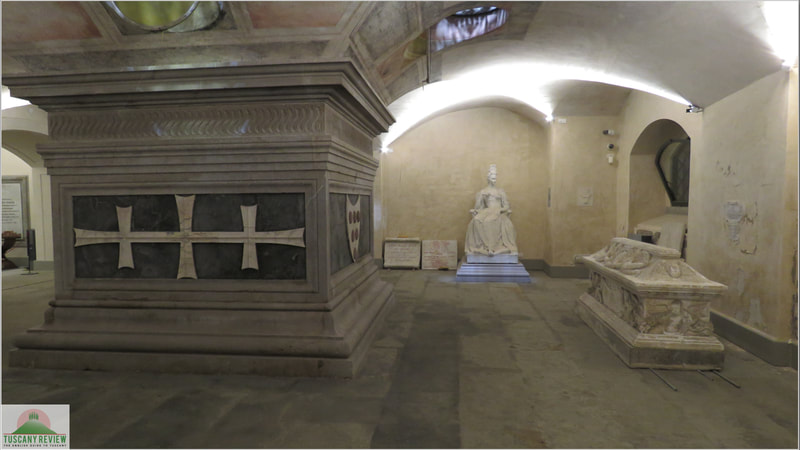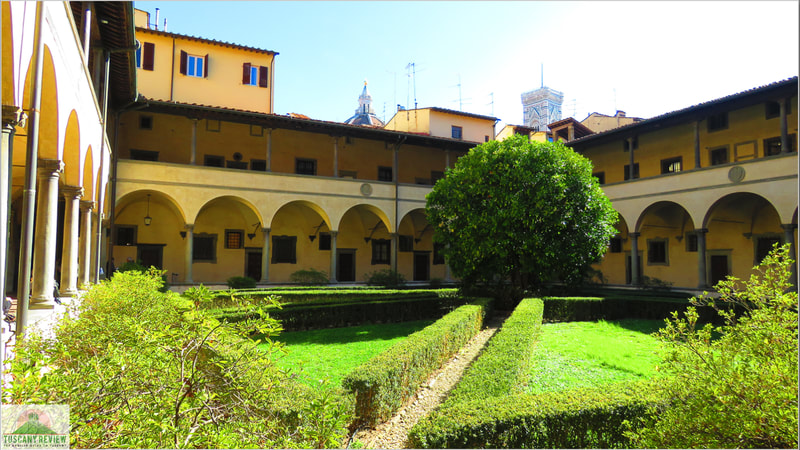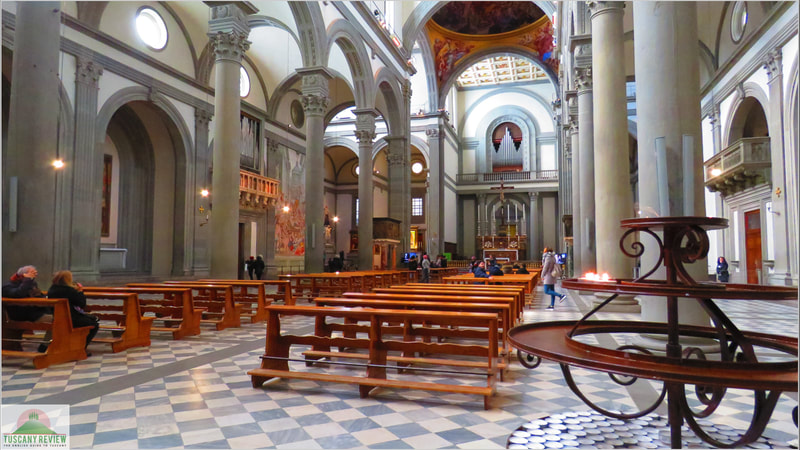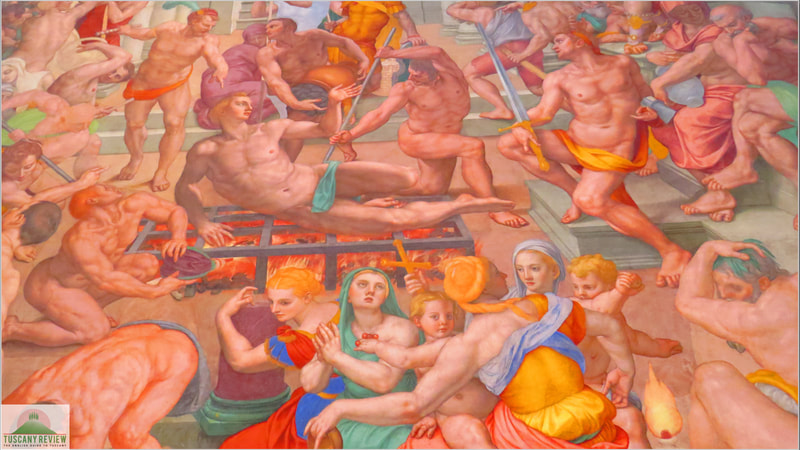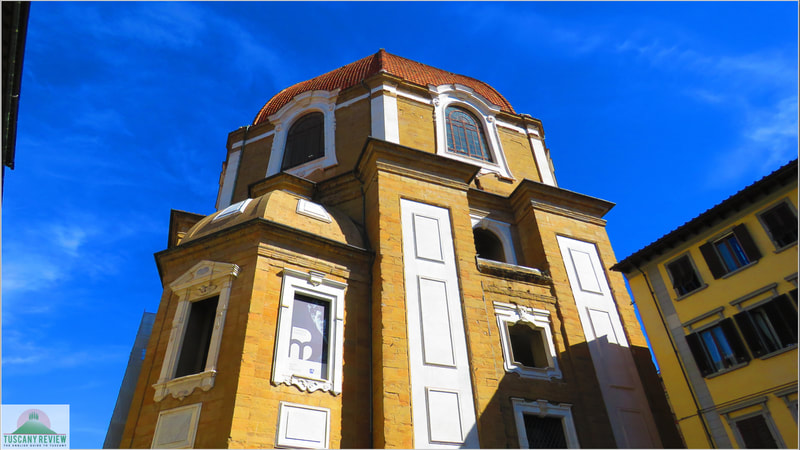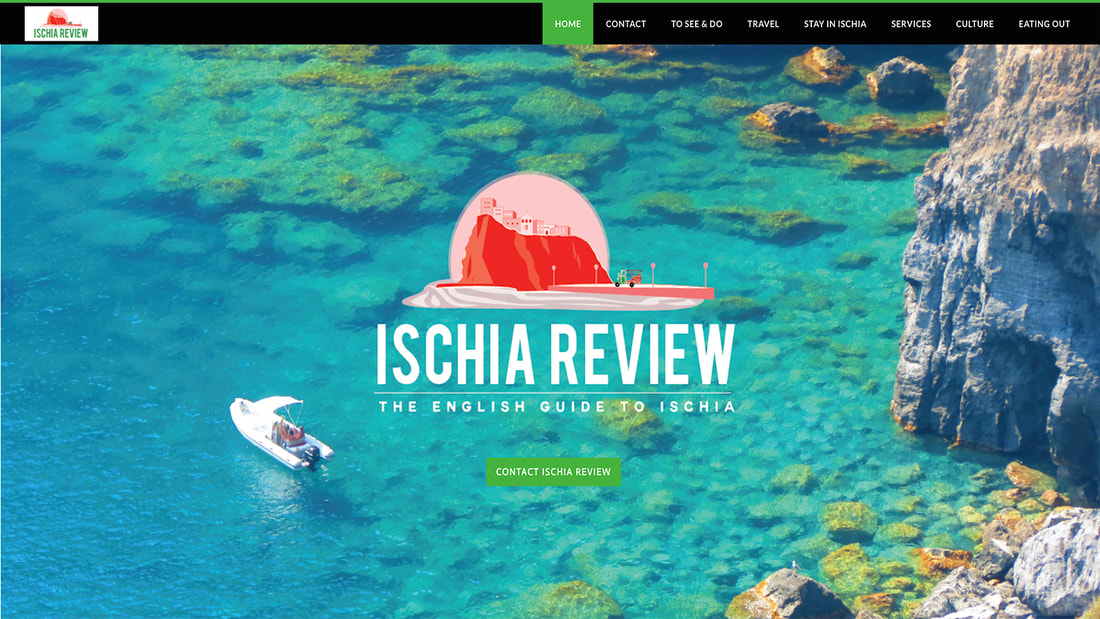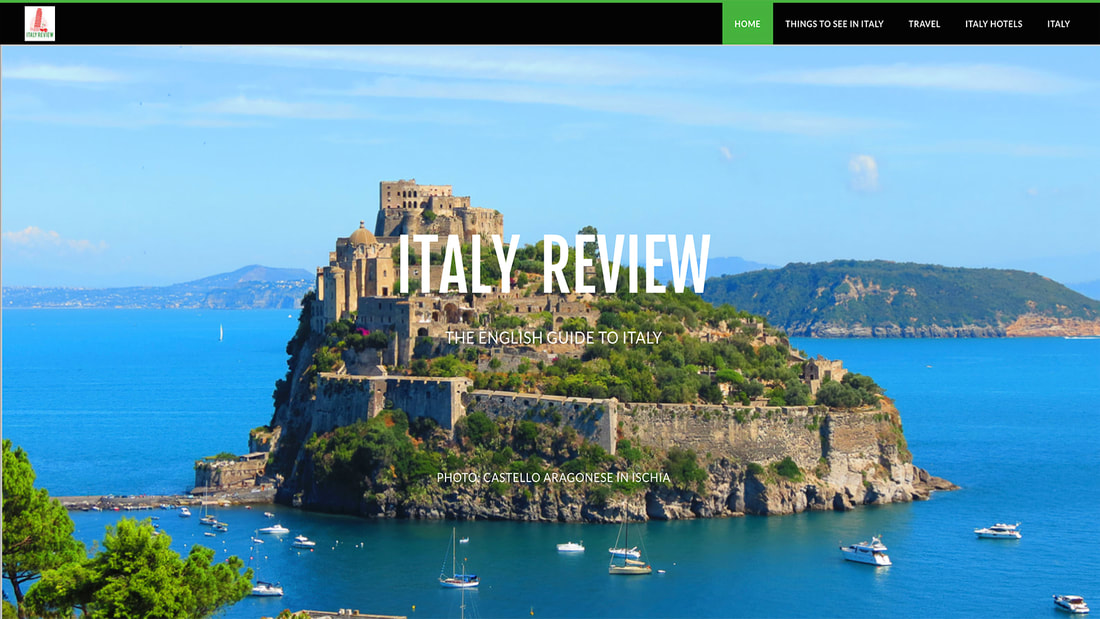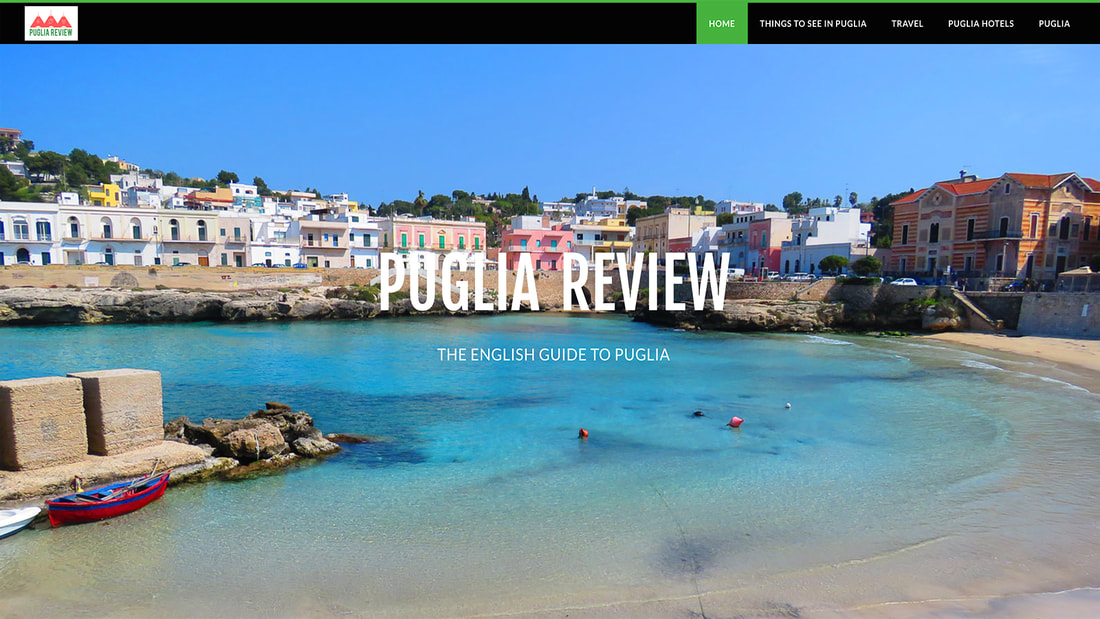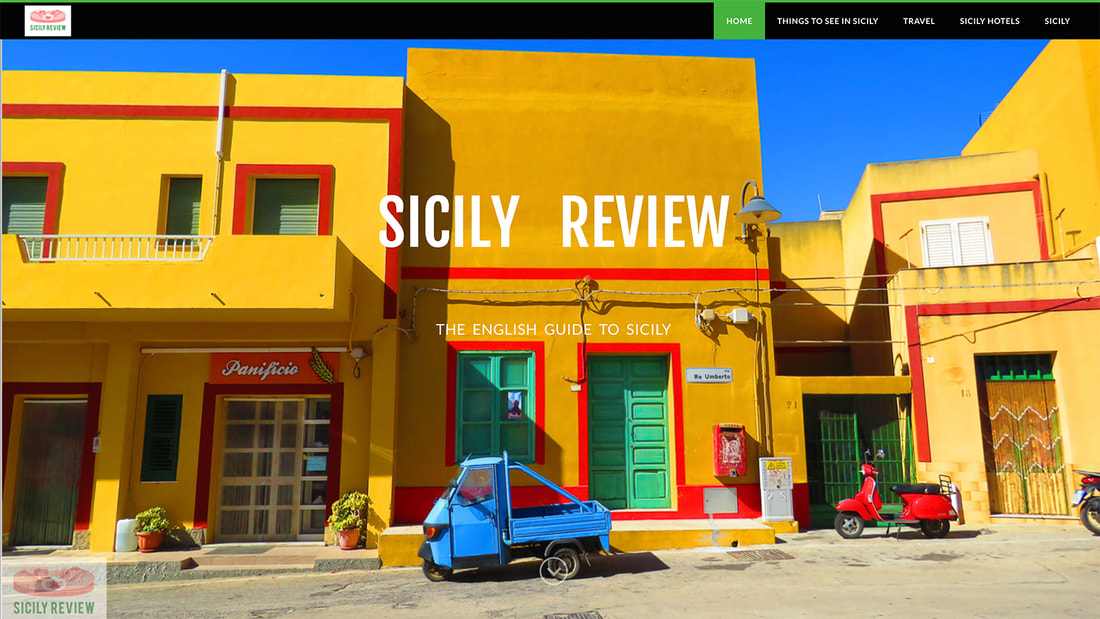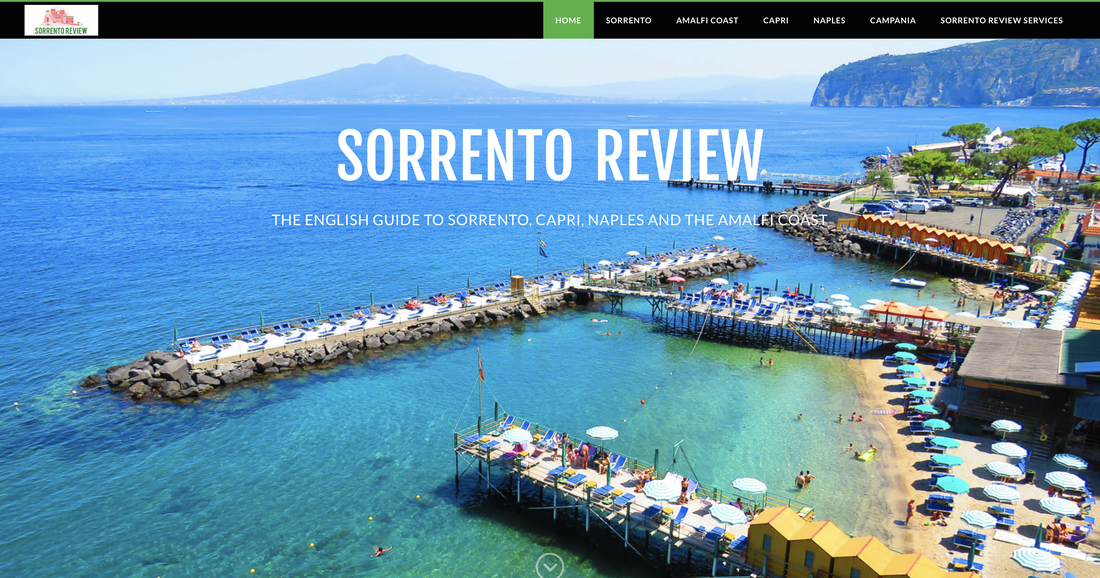Basilica di San Lorenzo Florence
Latest update: 18 February 2024
|
The importance of Florence in the history of arts was possible largely thanks to the patronage of artists and humanism of the Medici Family that ruled the city of Florence throughout the Renaissance. The traces of their legacy and their influence can be traced all around Florence, but the Basilica di San Lorenzo is an essential place to understand their story.
The impressive building, designed by Filippo Brunelleschi (famous for the dome of Florence Cathedral) was the parish church of the Medici family and is their burial place. |
|
Related links
Origins of the Basilica di San Lorenzo
It was also the Cathedral of Florence for 300 years before it lost that status to Santa Reparata. The Basilica di San Lorenzo was built in 1419, on the site of one of the city's oldest churches. It was totally finished, except for its façade, that could not be completed even in spite of several attempts through the centuries.
In the 16th century Pope Leo X (son of Lorenzo de' Medici) promoted a contest for the ideal façade design and Michelangelo’s proposal was chosen. He started working on the project, made several studies and even made a wooden model, now on display in the Casa Buonarroti Museum. He even went himself to the Apuan Alps to chose the marble for the project, but the construction didn’t advance too much.
It was also the Cathedral of Florence for 300 years before it lost that status to Santa Reparata. The Basilica di San Lorenzo was built in 1419, on the site of one of the city's oldest churches. It was totally finished, except for its façade, that could not be completed even in spite of several attempts through the centuries.
In the 16th century Pope Leo X (son of Lorenzo de' Medici) promoted a contest for the ideal façade design and Michelangelo’s proposal was chosen. He started working on the project, made several studies and even made a wooden model, now on display in the Casa Buonarroti Museum. He even went himself to the Apuan Alps to chose the marble for the project, but the construction didn’t advance too much.
Florence Tours
Stony facade
Soon after the works started by orders of the Pope, he ordered to stop them. Since then numerous barriers blocked the project: jealousies between artists, problems of budget and unexpected deaths meant that for almost two centuries the project was forgotten and the façade didn’t became a reality. However, what was an unaddressed problem, with time turned out to be San Lorenzo’s particular feature and a symbol of the city: It is not anymore unfinished, but original. This sober surface, without ornaments, made of rough stone and horizontal lines still remains untouched and worth a visit.
Soon after the works started by orders of the Pope, he ordered to stop them. Since then numerous barriers blocked the project: jealousies between artists, problems of budget and unexpected deaths meant that for almost two centuries the project was forgotten and the façade didn’t became a reality. However, what was an unaddressed problem, with time turned out to be San Lorenzo’s particular feature and a symbol of the city: It is not anymore unfinished, but original. This sober surface, without ornaments, made of rough stone and horizontal lines still remains untouched and worth a visit.
Medici Chapels
Another unaccomplished project in San Lorenzo was the one to bring the Holy Sepulchre itself, as the attempts to buy and then steal it from Jerusalem failed. But inside it is not as outside; In the Sagrestia Vecchia (Old Sacristy) are the tombs of several members of the Medici family, as in the Sagrestia Nuova (New Sacristy), designed by Michelangelo.
Also not to miss, the Cappelle Medici (Medici Chapels) in the apse and the Cappella dei Principi (Chapel of the Princes), from the 17th century, an impressive domed octagonal hall with the tombs of the grand dukes.
Another unaccomplished project in San Lorenzo was the one to bring the Holy Sepulchre itself, as the attempts to buy and then steal it from Jerusalem failed. But inside it is not as outside; In the Sagrestia Vecchia (Old Sacristy) are the tombs of several members of the Medici family, as in the Sagrestia Nuova (New Sacristy), designed by Michelangelo.
Also not to miss, the Cappelle Medici (Medici Chapels) in the apse and the Cappella dei Principi (Chapel of the Princes), from the 17th century, an impressive domed octagonal hall with the tombs of the grand dukes.
Museo del Tesoro di San Lorenzo
In the basilica’s cellar is now the Museum of the Treasure of San Lorenzo (Museo del Tesoro), where drawings by Jacopo da Pontormo, liturgical furnishings and reliquaries collected over the centuries can be appreciated. There are also the tombs of Giovanni di Bicci and Cosimo il Vecchio.
Also as a part of the complex is the Biblioteca Laurenziana (Medicea Laurenziana Library), an extraordinary example of Mannerist architecture designed by Michelangelo. It was constructed to house the family’s various treasures and contains a precious collection of manuscripts and antique volumes in Greek and Latin.
Just after the entrance you will see an astonishing stone stairway that leads to the vast reading hall, one of the few 16th century areas that are still preserved, as the lime wood ceiling and the magnificent windows with the Medici insignia designed by Giorgio Vasari prove. Check out the plutei (wooden benches), that functioned as book stands and cupboards; the codexes were stored horizontally on the lower shelves and fastened to the bench with chains to be consulted in-situ.
In the basilica’s cellar is now the Museum of the Treasure of San Lorenzo (Museo del Tesoro), where drawings by Jacopo da Pontormo, liturgical furnishings and reliquaries collected over the centuries can be appreciated. There are also the tombs of Giovanni di Bicci and Cosimo il Vecchio.
Also as a part of the complex is the Biblioteca Laurenziana (Medicea Laurenziana Library), an extraordinary example of Mannerist architecture designed by Michelangelo. It was constructed to house the family’s various treasures and contains a precious collection of manuscripts and antique volumes in Greek and Latin.
Just after the entrance you will see an astonishing stone stairway that leads to the vast reading hall, one of the few 16th century areas that are still preserved, as the lime wood ceiling and the magnificent windows with the Medici insignia designed by Giorgio Vasari prove. Check out the plutei (wooden benches), that functioned as book stands and cupboards; the codexes were stored horizontally on the lower shelves and fastened to the bench with chains to be consulted in-situ.
|
Opening times:
Monday to Saturday: 10:00 - 17:00 Sunday: 13:30 - 17:30 Closed all Sundays from November to February |
Prices:
Basilica - €6 Basilica and Medicea Laurenziana Library - €8.50 |
|
City: Florence
Province: Metropolitan City of Florence Region: Tuscany Built: 1419 Architectural style: Renaissance Walking distance from Piazza del Duomo: 4 minutes Close by: Giotto's Bell Tower, Florence Baptistery Recommended accommodation: Hotel Spadai |
Directions: By bus you can take any of the following route numbers: 1, 2, 12, 13, 28, 36, 37 or 57. If you come by car there are parking lots very close, including one under the San Lorenzo Market, just next to the basilica, or you can leave it in one of the many parking lots in the station area, as the basilica is no more than a 5 minutes walk from Santa Maria Novella Station. The tourist access is from the left-side door on the façade.


